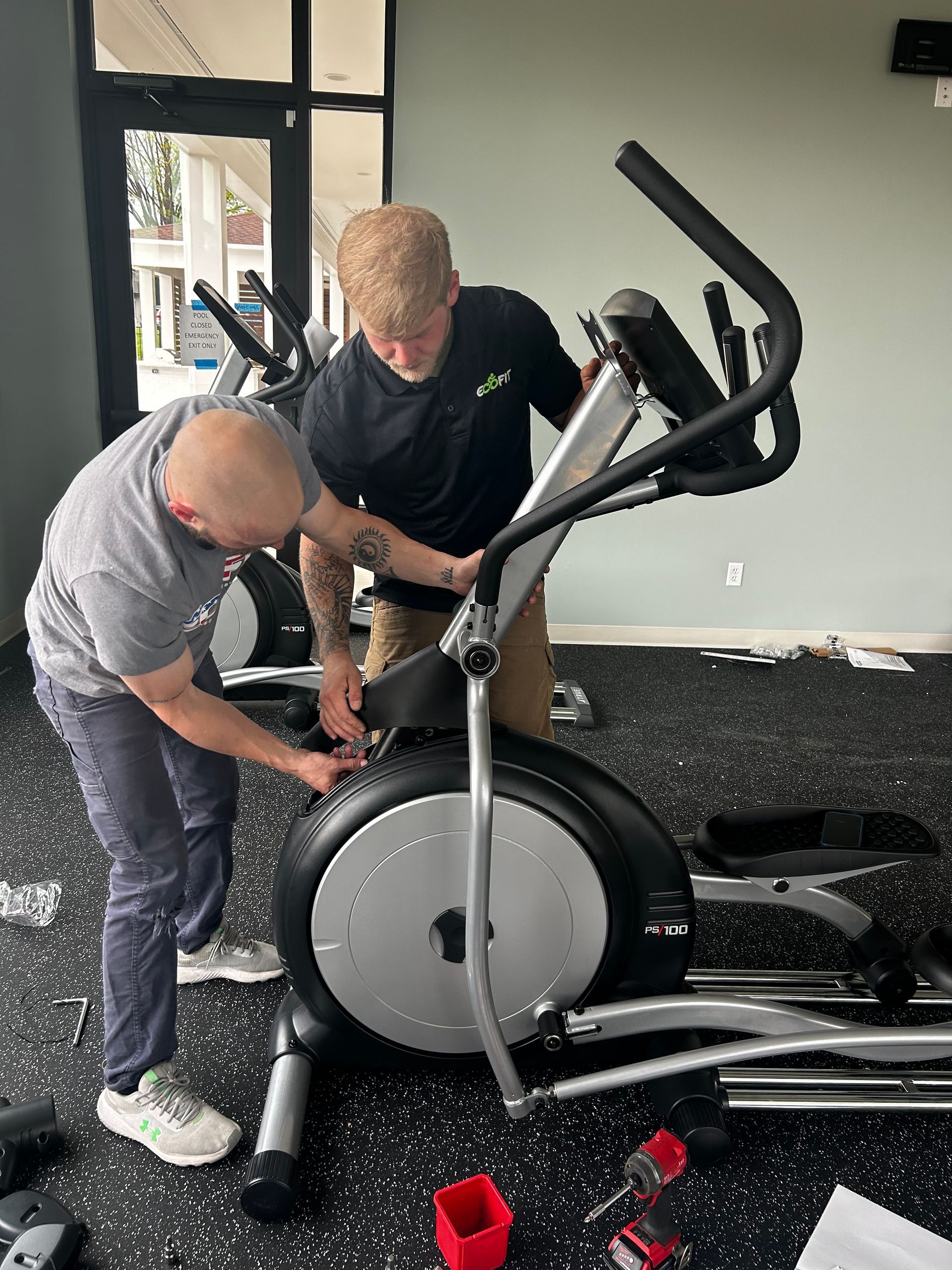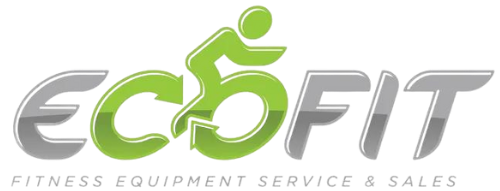Maximizing Gym Member Retention Through Well-Maintained Equipment
In the highly competitive fitness industry, gyms are constantly searching for ways to differentiate themselves, attract new members, and, most importantly, retain their existing clientele. While various factors such as class offerings, ambiance, and personal training services play a crucial role, the condition of the gym’s equipment is often overlooked. A gym filled with top-of-the-line, but poorly maintained, equipment can drive away even the most dedicated members.
Maintaining equipment in optimal condition is not only about extending its lifespan but also about ensuring member satisfaction and retention. Gym members expect the equipment they use to be safe, operational, and well-maintained. When their expectations are met—or exceeded—they are far more likely to renew their memberships. In this article, we will explore how maintaining gym equipment plays a pivotal role in member retention and how EcoFit can help gym owners keep their equipment in top-notch shape to ensure higher renewal rates.
The Importance of Equipment Maintenance for Member Satisfaction
Gym-goers want to trust that the equipment they use is reliable and safe. Whether it’s treadmills, weight machines, or free weights, the expectation is that everything is functional, clean, and safe to use. However, when gym equipment falls into disrepair, it not only poses a safety risk but also undermines the overall experience, leading to dissatisfaction.
A gym that takes pride in the condition of its equipment sends a message to its members: We care about your safety and experience. This feeling of care fosters loyalty. Here’s why well- maintained gym equipment is critical for member satisfaction and retention:
1. Safety and Risk Mitigation
Poorly maintained equipment poses serious risks. Faulty machines can lead to injuries, and an injured member is less likely to renew their membership or recommend the gym to others. Even minor issues like loose bolts, damaged cables, or malfunctioning electronic displays can lead to accidents, especially during high-intensity workouts.
For gym owners, regular preventative maintenance can drastically reduce the likelihood of accidents. It’s essential to avoid the reactive maintenance approach, where equipment is only fixed once it breaks down. Preventing accidents is not only about safeguarding members but also about protecting the gym’s reputation from potential lawsuits or insurance claims.
2. Enhances User Experience
Members don’t want to walk into a gym where half the treadmills are “out of order” or where weight machines creak with every rep. Functional, smooth-running equipment significantly enhances the user experience. The better the experience, the more likely members are to return.
A positive workout environment includes not only fully operational machines but also equipment that feels new and modern. Preventative maintenance can keep machines running like new, while regularly cleaning and lubricating them can maintain that “like-new” feel.
3. Minimizes Downtime and Inconvenience
Downtime is one of the biggest frustrations for gym members. Imagine walking into the gym ready to hop on your favorite elliptical machine, only to find it’s been out of service for days. Now multiply that experience for multiple members across various machines, and it’s easy to see why dissatisfaction can escalate quickly.
By maintaining gym equipment through regular inspections and addressing minor issues early, gyms can avoid prolonged downtimes. Members are more likely to stay loyal to a gym where the equipment is consistently operational, reducing the need for constant workarounds and ensuring a smooth workout experience.
The Link Between Well-Maintained Equipment and Member Retention
The connection between equipment maintenance and member retention is straightforward: members who have a consistently positive experience at the gym are more likely to remain loyal, renew their memberships, and recommend the gym to others. Equipment that is in poor condition is one of the fastest ways to lose members. Here’s how maintaining gym equipment directly impacts member retention:
1. Loyalty Through Reliability
When members trust that the equipment they use is reliable, they are more likely to form a habit of coming to the gym. Consistency is key to developing a regular workout routine, and reliable equipment supports that consistency. If members are consistently interrupted by broken-down machines or have to wait for repairs, their routine gets disrupted, and they may seek other gyms where they can maintain their workout schedules without frustration.
2. Creating a Professional and Welcoming Atmosphere
First impressions matter. Walking into a gym with visibly well-maintained equipment conveys professionalism and attention to detail. It shows that the gym values its members and their experience. On the flip side, a gym with poorly maintained, broken, or outdated equipment can leave a negative impression that can be hard to shake, making it easier for members to switch to a competitor.
Gym owners must consider that today’s members are more likely than ever to share their experiences on social media or review platforms. Negative reviews about broken equipment can dissuade potential new members from joining, while glowing reviews about the pristine condition of the gym can attract new members and encourage current members to stay.
3. Reduces Member Churn
Member churn is a significant challenge for gyms. One way to combat churn is to create an environment that fosters long-term engagement. The quality and maintenance of gym equipment are crucial in achieving this. Gym-goers who consistently have a positive workout experience—thanks to functional and safe equipment—are less likely to cancel their memberships. Conversely, members who feel inconvenienced or unsafe will quickly look for alternatives.
The Financial Benefits of Equipment Maintenance for Gyms
Investing in regular equipment maintenance doesn’t just benefit members; it’s also a smart financial decision for gym owners. Here’s how well-maintained equipment leads to long-term financial benefits:
1. Lower Long-Term Maintenance Costs
It may seem counterintuitive, but preventative maintenance is much more cost-effective than waiting for equipment to break down. Reactive repairs, particularly for large, expensive gym machines, can be costly and time-consuming. By investing in regular maintenance, gyms can prevent major repairs, extending the life of the equipment and reducing the need for frequent replacements.
2. Increased Equipment Longevity
Quality gym equipment is a significant investment. Proper care and maintenance can significantly extend the life of that equipment, protecting the gym’s initial investment. The longer the equipment lasts, the more time the gym has to see a return on that investment. For example, a treadmill or elliptical machine that is regularly maintained may last years longer than one that is left unattended, saving the gym thousands of dollars over time.
3. Attracts New Members
Maintaining a clean, well-functioning gym not only helps retain current members but also attracts new ones. Word-of-mouth recommendations and positive online reviews play a critical role in bringing in new clients. A gym known for its high-quality, well-maintained equipment will naturally have an edge over competitors that neglect this aspect of their facility.
How EcoFit Can Help You Retain Members and Maintain Equipment
EcoFit understands the importance of keeping gym equipment in top condition, and we specialize in helping gyms ensure their equipment is always operational, safe, and clean. With our comprehensive preventative maintenance services, gym owners can have peace of mind
knowing their equipment is in good hands. Here’s how EcoFit can help you maximize gym member retention:
1. Custom Maintenance Plans
Every gym is unique, and so are its maintenance needs. At EcoFit, we work with gym owners to create custom maintenance plans tailored to the specific equipment in your facility. Whether you have a small boutique gym or a large commercial facility, we ensure your equipment is serviced at the right intervals to keep it running smoothly.
2. Expert Technicians
Our team of highly skilled technicians understands the nuances of all types of gym equipment. From high-tech cardio machines to strength training equipment, our technicians can identify potential issues before they become major problems. With routine inspections and timely repairs, we minimize downtime and keep your equipment operating at peak performance.
3. Prolong Equipment Life
Preventative maintenance not only improves member satisfaction but also extends the life of your gym equipment. Our services help you get the most out of your investment by ensuring your machines last as long as possible.
4. Consultation Services
Not sure what equipment best suits your members' needs? EcoFit can help with that too. We offer consultation services to help gym owners select the best equipment for their target demographic. Our expertise allows us to recommend the right machines that will attract new members and keep existing ones coming back.
Conclusion
Maintaining gym equipment is more than just a necessity; it’s a vital component of member satisfaction and retention. A well-maintained gym creates a safe, enjoyable environment where members can focus on achieving their fitness goals without worrying about faulty machines. For gym owners, regular preventative maintenance not only keeps members happy but also protects your equipment investment and ensures long-term profitability.
With EcoFit’s comprehensive maintenance services, you can keep your gym equipment in top condition and retain your members longer. Reach out to EcoFit today to learn how we can help you maintain your equipment and maximize your gym’s potential.
Let Us Help you pick the right choice!






